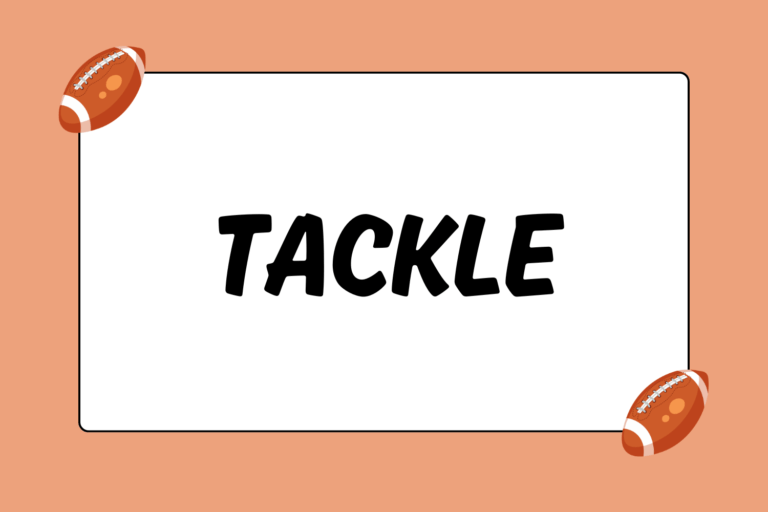There’s a saying that exists in the world of sports concerning a particular athletic attribute: ‘You can’t teach speed.’ While it’s true that every person on the planet has a limit concerning their top running speed, it certainly doesn’t mean that every person (or even most people) regularly and consistently hit that top speed.
Below is a list of exercises designed specifically to help boost the overall agility, endurance and speed of an athlete. While there are hundreds of different exercises football players can use to improve, these exercises were chosen because, among other things, they can be done alone and with a limited amount of additional equipment.
Always work out at your own pace, don’t overexert yourself with too much weight or too many repetitions, and know your limits. Over-training to the point of injury leads to the same result as not training at all: you won’t be able to play.
Hot Tip: Mix It Up
Variety is not just the spice of life. It’s also a key element in making an effective work-out. Do a mix of lifting activities one day, then concentrate on sprints the next, and then calisthenics the day after that. Changing the routine of a workout helps to keep your body guessing, and results in a more effective workout.
The Warm-up
Before any sort of exercising commences, a brief warm-up period is crucial to ensure that a workout provides the maximum amount of positive effect and goes a long way toward preventing injuries while working out.
Key areas to stretch: Because there are a variety of stretching exercises for each group of muscles, this is a list of the areas to focus on, rather than a list of stretches. Remember- everyone is different, and some people will need to put more effort into stretching than others.
- The Legs: Calves, hamstrings, thighs, hips, glutes.
- The Arms: Forearms, biceps, triceps, deltoids, trapezoids.
- The Torso: Upper and lower back, abs, obliques.
After stretching is done, it’s a good idea to get the heart pumping with 5-10 minutes of light jogging. The entire warm-up shouldn’t take more than 15 minutes, and will go a long way to ensuring a productive workout.
Running Coordination Exercises
These exercises aren’t so much for increasing speed or agility, but rather to help your body with being comfortable engaging in a variety of movements and activities while running. Start with two to three sets of a few repetitions of each exercise at a moderate distance (10 to 20 meters is a good starting point). Gradually increase both the number and distance of the repetitions, and the number of sets as you feel comfortable.
- Drum Majors: Take a few steps at a jog to build momentum, then lean back and alternate kicking out each leg with the toes pointed and the knee straight.
- Backwards Jog: Just as the name says, starting at a walk for the first few steps then steadily increase speed until the end.
- Tuck and Roll: Jog a few steps, lean over and tuck the upper body against the thighs while bringing the lower legs in to the back of the thighs, effectively turning into a ball, and somersault completely over while using the hands to brace on the ground and push through the somersault. Spring up into a jog, continuing to somersault after a few more steps. A variation of this is the Dive and Roll, where a dive onto the outstretched hands is substituted for the somersault.
- Down-ups: Jog a few steps, and then throw the feet behind the body while bringing the hands to the chest, palms out, and fall flat on the ground. Push up as quickly as possible and resume jogging, completing another down-up after a few more steps.
- Jump Twists: Jump up while moving forward. When in the air, twist the upper body in one direction while raising and turning whichever knee will twist the lower body in the opposite direction (i.e. rotate the upper body to the right, while lifting and turning the right knee to rotate the lower body to the left). Continue jumping the entirety of the distance, switching the rotation directions every jump.
Endurance & Agility Exercises
Running exercises specific to football should focus on three things:
- Generating and increasing the ability to produce a burst of speed
- Improving the ability to quickly stop and/or change directions while running full steam
- Increasing the length of time or distance a player can run and still perform at high levels
Some of the activities listed here refer to the use of cones and other markers, which are easily substituted with objects that are readily available and serve no other purpose than marking destination spots or boundaries.
Also, it’s important to point out a certain relationship between the distance being ran, the number of times it’s being ran, and the amount of time in between each attempt it’s ran. Without going into a scientific level of detail and involving things like lactate tolerance or glycolytic energy systems, keep this in mind to ensure a workout is as productive as possible. The greater the distance run in one repetition, the fewer the number of repetitions there should be in a set, and the greater the cool-down time between each repetition.
Endurance Exercises
- Wind Sprints: Pick a distance to sprint, and depending on the distance, choose a set number of repetitions for each set, and from that the number of sets to be run.
- Acceleration Sprints: A sprint that begins with a few walked steps, slowly speeds up to a slow jog, then a normal jog, then a fast jog/normal run, and ends in a flat-out sprint.
- Resistance Runs (requires a partner): Choose a limited distance, usually between 10 to 20 meters. The runner should start from a crouched position, with the partner standing in front facing the runner with their hands on the runner’s shoulders. The runner starts to run in short, choppy steps while the partner back steps and prevents the runner from reaching maximum speed by pushing on the runner’s shoulders. This can also be done backwards, with the partner pushing on the runner’s back instead of the shoulders.
- Bounding: Running a set distance by taking large, over-exaggerated steps (almost jumps from one foot to the other, but quicker) that focus more on the ground covered in each step rather than how quickly the distance is covered.
- Elephant Run (requires a group): Everyone involved starts jogging in a straight line at a good pace. The last person in line sprints past the rest of the group and steps in front of them, becoming the first person in the line. This is repeated over the entirety of the distance being run, with gradual increases in the jogging speed.
- Four Corners (requires markers): Create a large square by marking its four corners with cones. The distance between each cone should be the same on each side of the square (hence the square shape). Assign four different running activities for each side of the square, i.e. a side for jogging, a side for sprinting, a side for backwards running, and a side for bounding. Run in the predetermined style associated with each side of the square. It’s common to include one set of calisthenics at each of the square’s corners as well.
- Hill Run (requires an inclined surface): If the incline is large or steep, determine the distance to be run. If the entire incline is manageable in one repetition, use it accordingly. Run at a pace somewhere between a fast jog and a sprint to the peak of the incline. Slowly walk back down. A variation of this involved starting at the top and running down in a controlled manner as quickly as possible.
Agility Exercises
Shuttle Run (requires markers):
Using three cones/markers place them in a straight line, with 5 to10 meters between the middle marker and the markers on each side of it. Starting at the middle marker, sprint to the marker on one side and touch the ground by it, then sprint to the marker on the other side and touch the ground by it, then sprint back to the middle cone.
‘T’ Run (requires markers):
Similar to the Shuttle Run set up; place three markers in a straight line with 5 to10 meters between the middle marker and the markers on each side. Place a fourth marker straight out from the middle marker at the same distance between it and the markers on either side, making a ‘T’ shape. Start at the isolated marker, then sprint to the middle marker and loop around it in one direction or the other – if you choose to go right, run around the left side of the middle marker then turn right at the back of it, and reverse the directions if you choose to go left. Sprint to the side marker, then loop around it and sprint to the other side marker, looping around it and heading back to the middle marker. Loop around the middle marker once more so you’ll end up facing the marker you started from, then sprint to that marker.
Zig-Zags (requires markers):
Place one marker on the ground as the starting point, and imagine there is a straight line extending from it. Walk a few meters to the left or right at an angle of 45 degrees from the straight line and drop another marker. Drop the next marker on the other side of the line, also at a 45-degree angle but at a distance slightly longer than the distance between the starting marker and the first one you dropped. Repeat with the desired number of markers, making the distance between each subsequent marker and the next a little longer. Starting at the first marker you dropped, run to each marker in the order you placed them, either sharply changing directions at each or looping around each marker.
Moving Forward
Again, these are just a few of the many different exercises that can be used to become and stay a competitive football player. Consider these exercises a good starting point; they help improve overall running abilities in different ways, so they certainly will work for creating a routine that will exercise your whole body, but once you’ve been training for a while, expand the types of exercises you use in your routine. The more and different exercises you include, the better the results.





